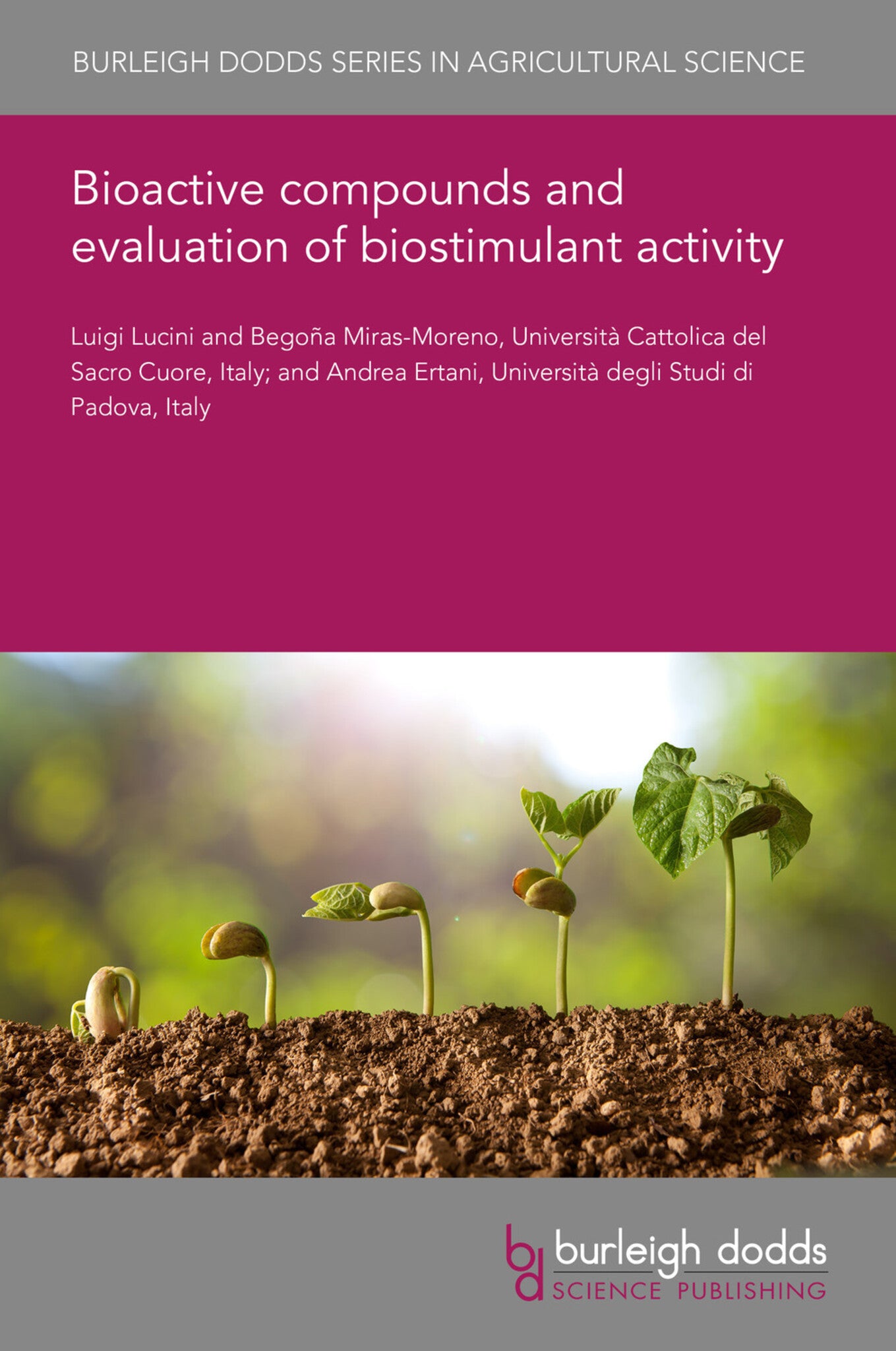We're sorry. An error has occurred
Please cancel or retry.
Bioactive compounds and evaluation of biostimulant activity
Regular price
£25.00
Sale price
£25.00
Regular price
£0.00
Unit price
/
per
Sale
Sold out
Re-stocking soon
The regulations concerning the placement of biostimulants on the market are still widely varying across countries and regions, even though both efficacy claims and composition declarations are prim...
Read More

Some error occured while loading the Quick View. Please close the Quick View and try reloading the page.
Couldn't load pickup availability
- Format:
-
27 July 2020

The regulations concerning the placement of biostimulants on the market are still widely varying across countries and regions, even though both efficacy claims and composition declarations are primarily addressed. The definition of pre-market approval systems specifying the data required for authorization is a key factor to protect the market of biostimulants. A combination of laboratory trials and dedicated ad hoc field studies are recommended to better address the definition of both mode(s) of action and effect(s) for plant biostimulants. Traditionally, in vitro assays (e.g. hormone-like activity tests) have been used to support the investigation of potential biostimulant activity. In recent years, the recent advances in analytics, technology and big data management have raised up the potential of -omic sciences in screening, evaluation and understanding regarding the mode of action for biostimulants. Provided the complementarity of different -omics, metabolomics and phenotyping are those adhering to actual phenotype, and are attracting a growing interest.

Price: £25.00
Publisher: Burleigh Dodds Science Publishing
Imprint: Burleigh Dodds Science Publishing
Series: Burleigh Dodds Series in Agricultural Science
Publication Date:
27 July 2020
ISBN: 9781786768254
Format: eBook
BISACs:
TECHNOLOGY & ENGINEERING / Agriculture / Sustainable Agriculture, Sustainable agriculture, TECHNOLOGY & ENGINEERING / Agriculture / Agronomy / Crop Science, TECHNOLOGY & ENGINEERING / Agriculture / Organic, Organic farming, Agronomy and crop production

1 Introduction 2 Active components 3 Data requirements 4 Mode of action 5 The omics approach 6 Hormone-like activity and in vitro assays 7 Conclusion and future trends 8 References



